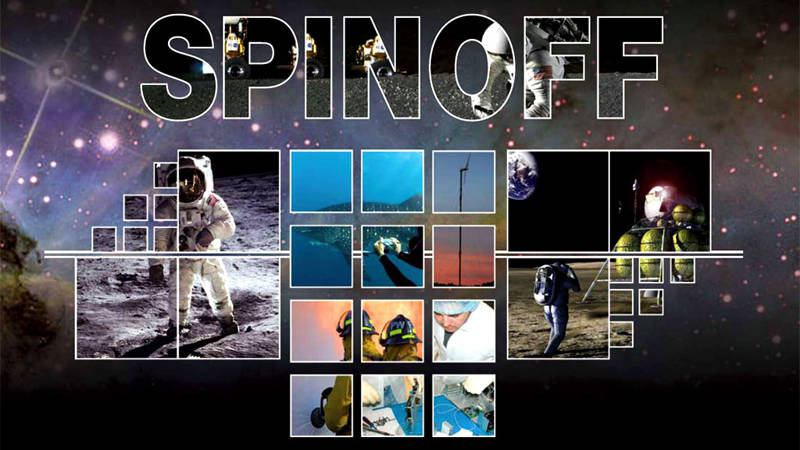The rewards of our nation’s ventures in space go beyond astonishing scientific discoveries and breathtaking human drama on the stage of the cosmos. Not to be overlooked are a multitude of down-to-earth technological “spin-offs” that we all share in and enjoy in our daily lives.
All modern technological conveniences have roots somewhere in the past, whether stemming from great need, from a military conflict, or simply by happy accident.
The discovery of life-saving penicillin was a laboratory accident. Early mechanical “logic machines,” like Alan Turing‘s Nazi code breaker in World War II, paved the way for digital computers in the decades that followed. Microwave ovens emerged from post-World-War-II military radar technology (the first microwave model was called the ‘Radarange’ for a reason).
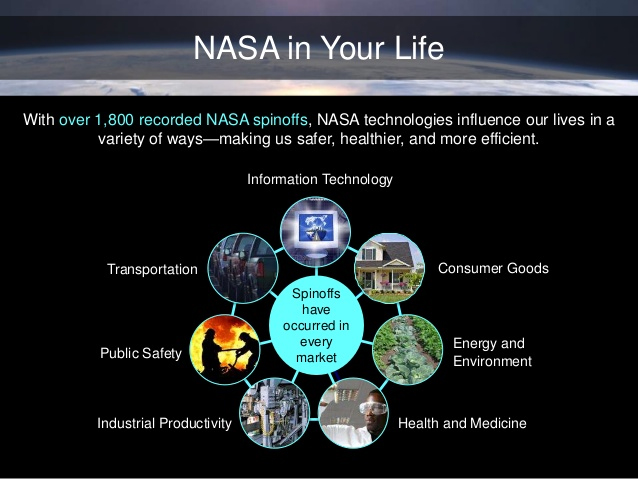
In some cases, that useful gadget in your home is a true space-age miracle. Many of the materials, devices, and processes originally invented for the moon landings and other space ventures were later commercially developed to deliver “space-age” conveniences and applications into our communities, work places, and homes.
Here are some examples.
Solar Power
The photoelectric effect, when light knocks electrons off of certain types of atoms to create an electrical current, has been known to us for over a century. Early light-sensitive detectors and meters made use of this phenomenon.
But photoelectric technology didn’t become advanced enough to produce useful quantities of electrical power until the space age, when the need to power orbital satellites and space probes challenged engineers to action.
Solar cells were first used in space on the United States’ Vanguard spacecraft in 1958 to extend the life of the battery-powered satellite.
In 1959, the Explorer 6 satellite was launched, carrying large wing-like arrays of solar panels that enabled it to operate for months.
Today, solar panels are found everywhere, from giant collector arrays on building rooftops to small panels (or cells) powering all manner of gadgets.
Cold-Weather Wearables
In 1992, NASA contracted Aspen Technologies to develop “aerogel” fabrics for thermal insulation material. Aerogel, first invented in 1931, is created by removing the liquid components from a gel and leaving behind the thin skeleton of its solid structure.
The extremely sparse material is a very poor conductor of heat, making it perfect as a lightweight thermal insulator. NASA employed the insulators developed from aerogel in the heat shields of spacecraft and also the swaddling layers of its astronauts’ spacesuits.
Professional explorers and serious wilderness enthusiasts on Earth have benefited from commercial spinoffs of these insulators, in the form of glove liners, boot insoles, and even lightweight insulated jackets.
One climber who summited Mount Everest with a pair of “Toasty Feet” insoles inside her boots reported that her feet remained warm and comfortable throughout her climb, despite wearing only a single pair of socks.
Foil Blankets
The silvery-foiled “space blanket” you may have used on camping trips, or keep in the emergency roadside kit in your car, was another product of the Apollo program, developed in 1964.
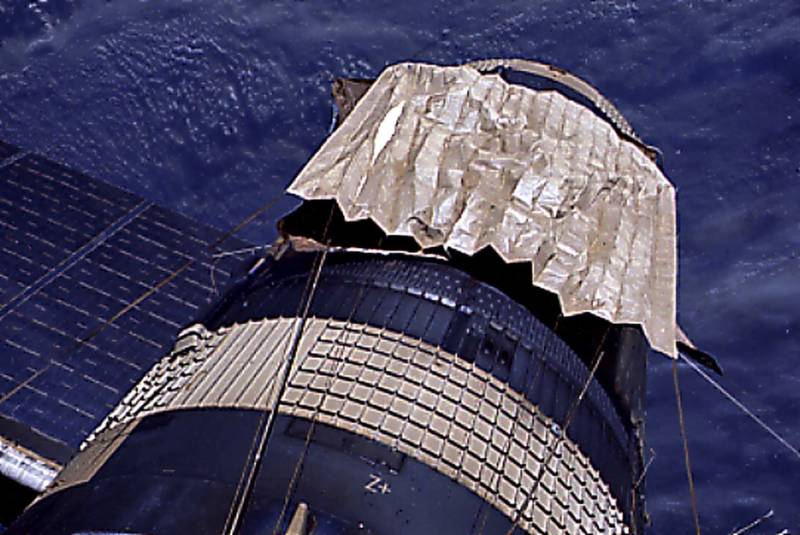
The multi-layer, aluminized-mylar material was created to address the need for lightweight and compactly stored thermal insulation to protect astronauts from temperature extremes in space.
Scratch-Resistant Glasses
The scratch resistant coating you may have on your sunglasses, eyeglasses, or ski mask also stems from the development of spacesuit materials.
In the 1980s NASA’S Ames Research Center came up with a material to prevent astronauts’ spacesuit helmet visors from becoming scratched — a serious consideration during space walks and other maneuvers where clear vision is essential, and scratch-covered lenses and visors cannot be readily replaced.
Miniature, Inexpensive Digital Cameras
If you have marveled at the detailed, rich, and colorful pictures that tiny little camera on your smart phone takes — or are just glad to have such a small and portable camera with you at all times — you can thank NASA.
An engineer at the Jet Propulsion Laboratory developed the CMOS sensor in 1995, a photographic chip tailored for the reliability, image quality, and low power consumption required aboard robotic space probes with limited power budgets and the need to take many thousands of pictures each day. CMOS stands for “complementary metal-oxide semiconductor,” a solid-state technology previously developed for use in microprocessors and other computer applications.
This space-camera innovation later spun off a family of smaller, cheaper imaging chips for a range of commercial applications, including smart phones, sport cams, web cams, compact digital and DSLR cameras.
Fireproof Clothing
You might not be a firefighter, astronaut, or airplane pilot, but it should comfort you to know that many of society’s professional first responders and other heroic personnel won’t easily catch fire if put into an incendiary situation.
The fatal Apollo 1 training drill fire that killed three astronauts in 1967 pressed NASA engineers to rethink the use of combustible materials in spacesuits and other furnishings on board their spacecraft.
Working with a synthetic fiber called polybenzimidazole, NASA developed a fabric that would not catch fire, especially in the high-oxygen environment of an Apollo space capsule.
This innovation bestowed fire protection not only upon Apollo astronauts of later missions, it also protects post-Apollo astronauts to this day.
The technology quickly branched out into other government and commercial applications, from the outer fire-resistant shells of firefighter gear, to sporting applications such as clothing worn by race car drivers, to uniforms and protective clothing for workers in industrial settings.
Vac-Packed Food
You go to your kitchen’s pantry shelf and select a rigid plastic-wrapped food item, slit the plastic, and hear that little “phhht!” as the package seems to melt into softness. Then, time to cook.
You may appreciate how the vacuum-packaging keeps your food shelf-safe for months (or even years) without refrigeration, but did you know that the technique was developed for use in space by astronauts?
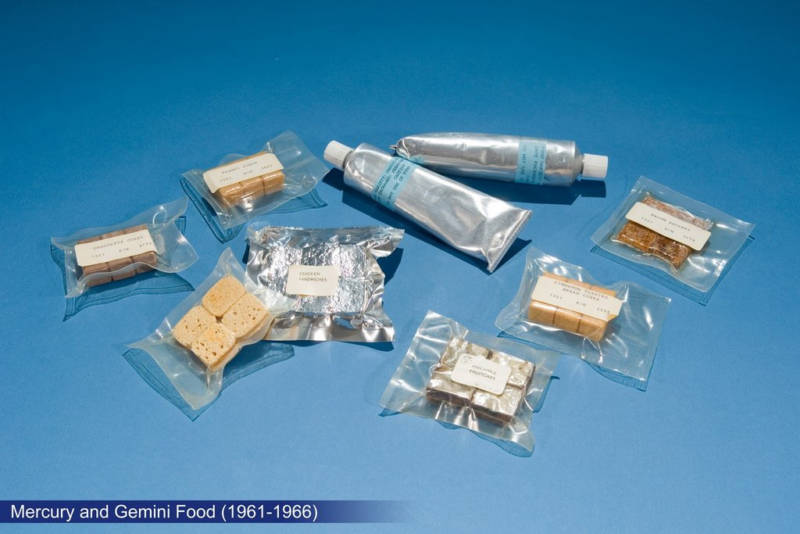
NASA developed a process for freeze-drying and vacuum-packaging food for astronauts in space as early as Gemini missions. It has been used to supply or supplement the food of all human space missions since.
Bacterial contamination and growth is prevented by the hermetic seal and the low-pressure and -oxygen environment inside. Vacuum-sealing also reduces the volume of the package, making for more compact storage.
Out of this space innovation came improvements to the preparation of commercially supplied food on Earth. Extending the shelf-life of food means less waste from spoilage, greater ease of transportation and distribution, and increased food safety and public health.
Memory Foam
Have your running shoes lost their springy step? Does that old mattress welcome you to bed each night with the hug of a permanent body-formed declivity? Do you have a favorite sitting spot on your couch because the rest of it is just too firm and supportive?
Looks like a job for memory foam.
Developed under a contract by NASA/Ames Research Center in 1966 to cushion test pilots pulling high-G maneuvers in jet aircraft, the springy, resilient, always-snaps-back-to-the-same-shape material that we have come to know as memory foam has found many commercial and domestic applications over the last few decades. Your happy feet, good night’s sleep, and general couch-potatoing enjoyment are proof.
Cordless Power Tools
Imagine you are an Apollo astronaut on the moon’s surface, assembling the lunar rover, setting up scientific instruments, and collecting rock specimens. You could really use an electric-powered tool. The problem: you’re on the moon and there are no electrical outlets for a quarter of a million miles. What do you do?
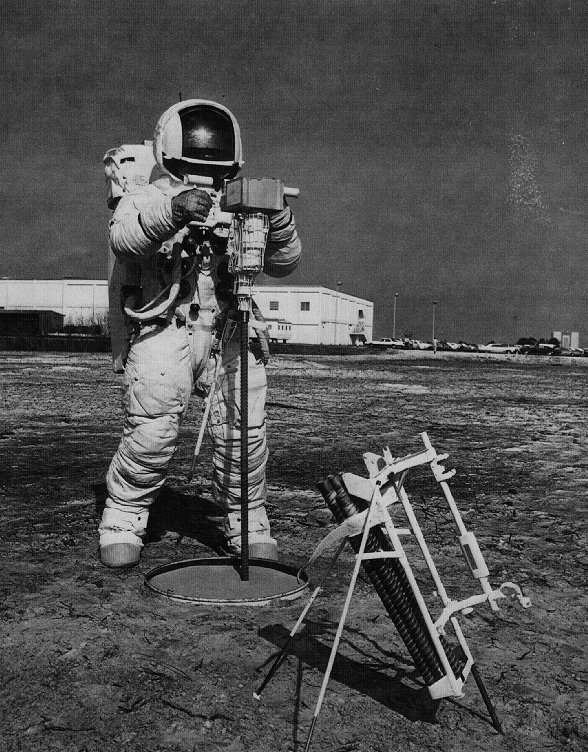
If you were NASA, you teamed up with the Black and Decker company to develop the specialized motors and batteries needed for completely cordless hand-tools that can operate in the airless, sometimes weightless environments of space.
Black and Decker had already invented battery-powered hand tools, but coming up with the very specialized devices NASA needed required some innovation. For the Gemini missions, the company produced an electric wrench that could turn a bolt in Zero-G without sending the astronaut into a spin of their own. For the Apollo missions, a special hammering rock drill was developed for astronauts to collect rock samples on the moon’s surface.
Spinning off the technology for commercial applications, Black and Decker later developed the light-weight, high-speed motor that powered their “Dustbuster” hand-held vacuum cleaner.
